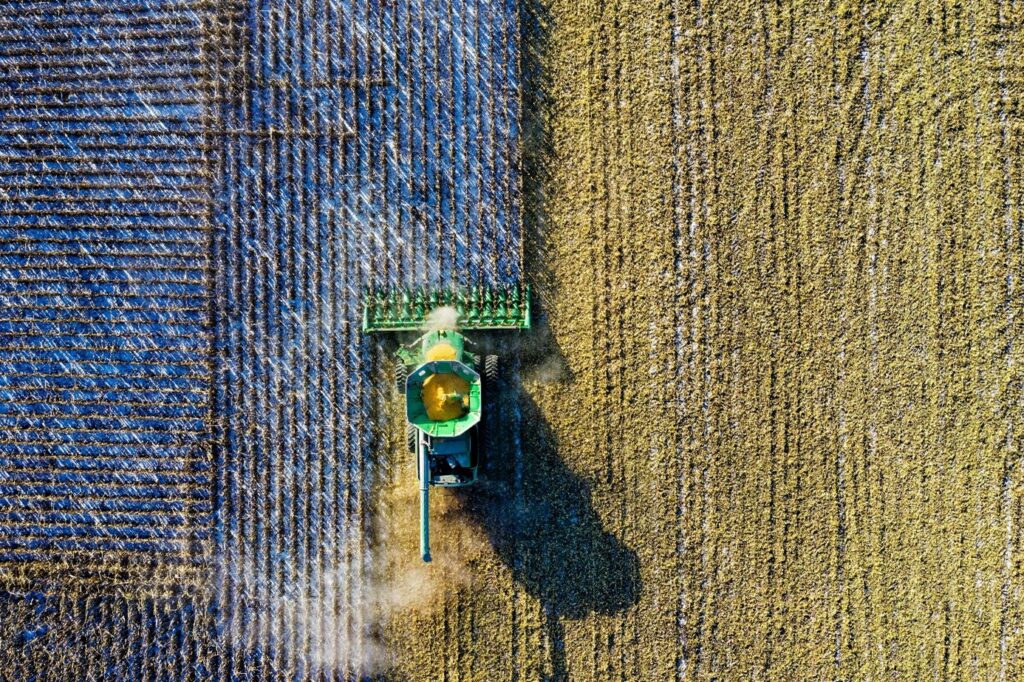What is the ration between corn and soybeans?
In the United States, many farmers face a choice every year when it comes to the planting season. They can plant soybeans or corn. The US ethanol mandate has supported corn production for years, but farmers always strive to maximize their yield. They tend to plant the crop that will create the best economic outcome. When the prices of both soybeans and corn rise, farmers’ choices can create a shortage of one or the other of these grains. If the price of corn rises more than that of soybeans, the reduced bean planting could create a deficit in the global soybean market. China traditionally buys a quarter of the US soybean crop. If US farmers plant more soybeans in a rising market, the corn market could suffer a shortage.
Farmers plant the crop that gives the best yield
One of the metrics farmers look at is the price ratio of corn to soybeans for clues about which crop will produce the best yield for the coming year. The corn-to-soybean ratio is a tool that tells you the relative value because it is a spread between commodities and substitute products. The ratio can be an invaluable tool for investors or speculators active in the grain markets. The beans-corn spread is a tool for trading on the ratio between corn and soybean futures prices. This price ratio is one of the factors that grain producers take into account when making planting decisions, to determine whether to plant more of one type of grain compared to the other variety. The corn-soybean ratio is the price ratio between the two crops. By dividing the November soybean futures price by December corn futures, the ratio is calculated as the harvest year approaches. In early January, US farmers look at this price ratio and may even hedge price risk based on the level of this spread.
Why grain investors should follow ration between corn and soybeans
From an end-user perspective, it is not the question of “plant maize or plant soybean” that is of most interest – instead it is the question of “feed DDGS or feed soybean meal”, alongside all the other energy and protein providing feed options available: wheat, barley, sorghum, cottonseed meal, sunflower meal from Ukraine, etc. The soybean-corn price ratio is often used to help quantify relative returns between soybeans and corn. Higher price ratios indicate that soybeans are relatively more profitable than corn. For example, a corn price of $3.50 and a soybean price of $9.00 yields a soybean-corn price ratio of 2.57 (2.57 = $9.00/$3.50). An increase to a $9.50 soybean price while the corn price remains the same increases the yield of soybeans relative to corn. An increase in the soybean price to $9.50 results in a price ratio of 2.71, higher than 2.57 based on a price of 9.00 percent.
Soybean-corn ration
A general rule of thumb is that the average ratio has been 2.35 and that a figure above this tends to encourage the planting of soybeans over maize and a ratio below 2.35 is generally seen as more favorable for maize as opposed to soybeans. The higher the ratio of soybeans to corn, the more attractive it is to grow soybeans. The lower the ratio, the more attractive it is to grow corn. In the United States, much of the farmland is used for growing corn and soybeans. Rotated corn is a common practice, but in recent years, mainly due to the “ethanol boom” and increased profitability of corn production, many farmers have switched to growing corn continuously. The price increase for corn is affecting the soybean-to-corn ratio (STC), but it is assumed that over time market effects will be felt and restore the ratio to its stable range. Every year is a new adventure for the crops that feed and increasingly power the world. These two types of cereals are agricultural products that provide both food and energy. The United States is the world’s leading producer and exporter of grains and oilseeds. As we move towards the planting season, which begins in March and April, farmers are thinking about which crops to plant in their fields. For many of these producers, these two grains are interchangeable crops.
Input costs have increased dramatically
Producing a bushel of corn or soybeans has become much more expensive over the past year. The values of energy, fertilizer, equipment, labor and land have increased significantly in recent years. In December 2021, the key inflation barometer, the consumer price index, indicated a seven percent increase in the economic situation in 2021, the highest level in four decades. Farmers are businessmen; they produce crops for financial gain. When input costs rise to levels that make farming a loss-making business, they either go bankrupt or grow other crops, creating shortages of what they don’t grow. Corn and soybeans are key ingredients in many foods. Moreover, tackling climate change has increased the demand for biofuels. Maize is the primary ingredient in US ethanol, and soybeans are an input in the production of biodiesel. The demand side of the basic equation for cereals and oilseeds is increasing due to climate change. At the same time, the world’s population is growing by around 20 million people every quarter. More mouths to feed only increases the demand side of the fundamental equations. Rising demand and production costs are a potent bullish cocktail for corn and soybean prices.
Three reasons why investors should look at the price ratio
Three factors make viewing and monitoring the maize-soybean ratio a requirement for traders and investors in agricultural products: – The spread is a real-time indicator of farmers’ planting intentions; – The ratio can identify any problems in South American crops, as Brazil and Argentina are significant soybean-producing countries. – The ratio highlights possible changes in demand for maize as biofuel needs increase as the world tackles climate change. Rising agricultural costs are likely to put upward pressure on crop prices, but farmers will always try to grow the product that provides optimal returns. The price ratio between soybeans and corn is often used as one of several tools to measure the profitability of soybeans and corn. The current ratio of the prices of these grains in the United States has recently risen, sending a signal to farmers that the relative profitability of soybeans has increased compared to corn. Soybeans and corn are crops that compete for acreage in production and are complements in feed use.
About the Vikingen
With Vikingen’s signals, you have a good chance of finding the winners and selling in time. There are many securities. With Vikingen’s autopilots or tables, you can sort out the most interesting ETFs, stocks, options, warrants, funds, and so on. Vikingen is one of Sweden’s oldest equity research programs.
Click here to see what Vikingen offers: Detailed comparison – Stock market program for those who want to get even richer (vikingen.se)













